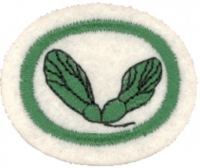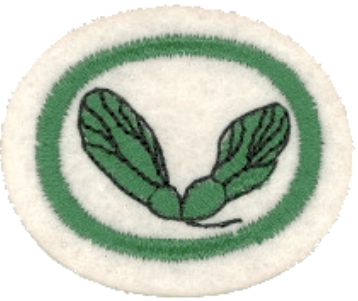Difference between revisions of "AY Honors/Seeds/Answer Key/es"
(Created page with "{{clear}}") |
(Updating to match new version of source page) |
||
| (18 intermediate revisions by 2 users not shown) | |||
| Line 1: | Line 1: | ||
| − | + | {{HonorSubpage}} | |
| − | + | <section begin="Body" /> | |
| − | {{ | ||
| − | |||
| − | |||
| − | |||
| − | |||
| − | |||
| − | |||
| − | |||
| − | }} | ||
| − | |||
| − | |||
| − | |||
| − | |||
| − | |||
| − | |||
| − | <section begin="Body" /> | ||
{{ansreq|page={{#titleparts:{{PAGENAME}}|2|1}}|num=1}} | {{ansreq|page={{#titleparts:{{PAGENAME}}|2|1}}|num=1}} | ||
<noinclude></noinclude> | <noinclude></noinclude> | ||
| Line 42: | Line 26: | ||
<!-- 4. Decir de memoria cuatro diferentes métodos con los cuales se esparcen las semillas. Nombrar tres clases de plantas cuyas semillas son esparcidas por cada método. --> | <!-- 4. Decir de memoria cuatro diferentes métodos con los cuales se esparcen las semillas. Nombrar tres clases de plantas cuyas semillas son esparcidas por cada método. --> | ||
| − | {{clear}} | + | {{clear}} |
{{clear}} | {{clear}} | ||
| Line 54: | Line 38: | ||
{{clear}} | {{clear}} | ||
| − | + | {{clear}} | |
| − | + | {{clear}} | |
| − | |||
| − | + | {{clear}} | |
| − | |||
| − | |||
| − | + | {{clear}} | |
| − | |||
| − | + | {{clear}} | |
| − | + | {{clear}} | |
| − | |||
| − | + | {{clear}} | |
| − | |||
| − | |||
| − | |||
| − | + | {{clear}} | |
| − | + | {{clear}} | |
| − | |||
| − | |||
| − | |||
| − | |||
| − | |||
<noinclude></noinclude> | <noinclude></noinclude> | ||
| Line 125: | Line 96: | ||
{{ansreq|page={{#titleparts:{{PAGENAME}}|2|1}}|num=9}} | {{ansreq|page={{#titleparts:{{PAGENAME}}|2|1}}|num=9}} | ||
<noinclude></noinclude> | <noinclude></noinclude> | ||
| − | <!-- 9. | + | <!-- 9. Hacer una colección de 30 diferentes clases de semillas, de los cuales solo 10 se pueden obtener de los paquetes de semillas comerciales, los otros 20 se deben de recolectar por sí mismo. Etiquetar cada clase de la siguiente manera: nombre de la semilla, fecha recolectada, la ubicación donde se recogieron y el nombre del coleccionista. --> |
| − | {{: | + | {{:AY Honors/Seeds/Seed collection/es}} |
<noinclude></noinclude> | <noinclude></noinclude> | ||
{{CloseReq}} <!-- 9 --> | {{CloseReq}} <!-- 9 --> | ||
<noinclude></noinclude> | <noinclude></noinclude> | ||
| − | == | + | ==Referencias== |
| − | |||
| − | |||
| − | |||
| − | |||
| − | |||
| − | |||
<noinclude></noinclude> | <noinclude></noinclude> | ||
| − | + | ||
| + | [[Category:Adventist Youth Honors Answer Book/Do at home{{GetLangSuffix}}]] | ||
| + | {{CloseHonorPage}} | ||
Latest revision as of 23:40, 3 January 2023
1
2
3
4
5
6
7
8
9
Las semillas están a todo su alrededor. Puede encontrarlos en muchas frutas, como manzanas, naranjas, peras, toronjas, mandarinas, fresas y limones. También están presentes en muchos vegetales, como pepino, calabaza, maíz (use palomitas de maíz para su colección) y frijoles de todas las variedades. Haga un paseo por la sección de productos agrícolas de una tienda de comestibles y compre algunos de estos alimentos. Es especialmente divertido probar frutas y verduras nuevas e inusuales.
Las flores también producen semillas, por lo que puede recolectar semillas de las flores que tal vez ya tenga en su macizo de flores o de otra persona (con su permiso).
También puede recolectar varias semillas en la naturaleza, como semillas de pasto, algodoncillo, bellotas (y otras nueces), trébol, vara de oro, etc.
Una vez que haya agotado estas fuentes, vaya a la sección de semillas de una tienda. Esto debe reservarse como último recurso.


